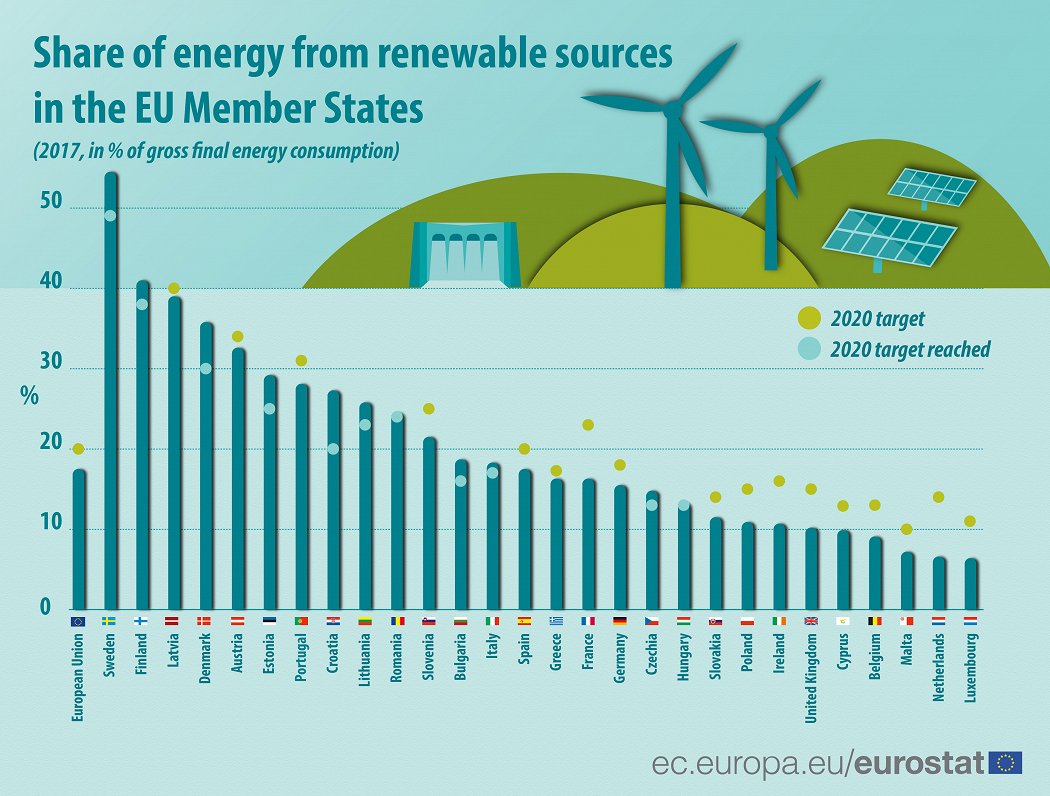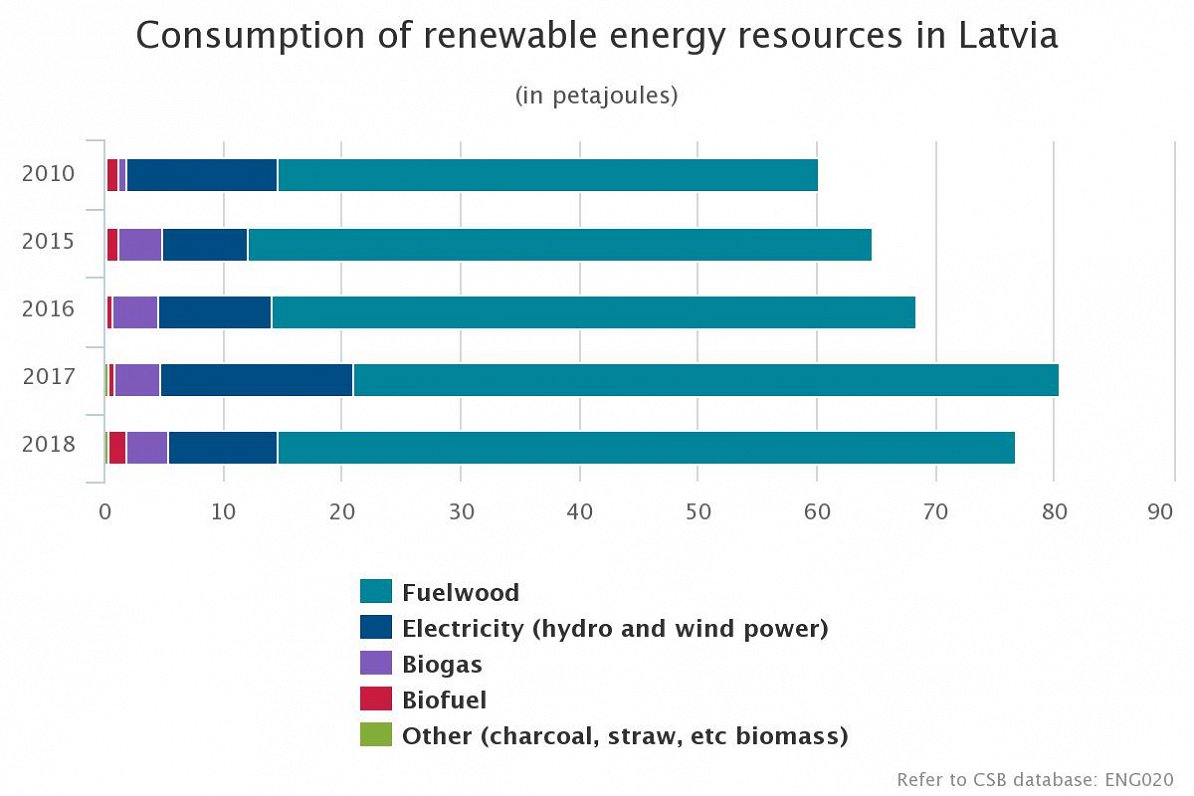Data compiled by the Central Statistical Bureau (CSB) show that in 2018 gross consumption of renewable energy sources (RES) in Latvia amounted to 76.8 petajoules (PJ). Compared to 2017, consumption of RES declined by 4.5 %, and over the past five years by 13.1 %. Their share in the gross energy consumption amounted to 35.2 % in 2018.
"Reduction in the consumption of RES was influenced by the drop in the volume of energy produced in hydro power and wind power plants," the CSB said.
"In 2018, compared to 2017, the volume of primary electricity produced fell by 43.6 % – of which reduction of 44.5 % in hydro power plants and by 18.7 % in wind power plants. Last year, hydro power plants produced 2 432 GWh and wind power plants 122 GWh of primary electricity. In 2018, the small amount of electricity generated in hydro power plants, which may be explained by unusually dry and long summer leading to low water level and small water inflow in river Daugava, had the greatest downward effect on the amount of electricity produced," the CSB said.
Fuelwood is the renewable resource used in Latvia the most commonly. During the last five years, gross consumption of fuelwood increased by 11.1 %, reaching 62.2 PJ in 2018, and over the year by 4.5 %. In 2018, compared to 2017, the volume of wood chips produced went up by 10.8 %, which was facilitated by the use thereof in the production of pelleted wood. Last year, 30.9 PJ of pelleted wood were produced, which is 9.9 % more than in 2017.
Households are the main consumers of fuelwood – in 2018, fuelwood consumption in households amounted to 36 % of the gross fuelwood consumption, and, compared to 2017, the indicator has risen by 6.1 % reaching 22.4 PJ. During the past five years, the share of RES consumed in the production of electricity and heat in transformation sector has grown by 7.2 percentage points, reaching 35.1 % of the gross consumption in this sector in 2018. The rise may be explained by the transition from natural gas to wood chips in generation of electricity and heat in combined heat and power (CHP) plants, the CSB said.
Since 2013, consumption of biogas (landfill gas, sewage sludge gas, and other biogas) has risen by 16.2 %, while during the year it fell by 6.6 % reaching 3.6 PJ in 2018.
Nevertheless, on paper at least, Latvia remains among the greenest energy users in the European Union. Latvia has set a target to reach 40 % of the energy produced from RER in the gross final energy consumption by 2020. In 2017, Latvia had the third highest share of RER in the energy consumption in the European Union with 39% from RERs. The highest share was recorded in Sweden (54.5%) and the second in Finland (41.0 %), while the EU average indicator constituted 17.5 %.































